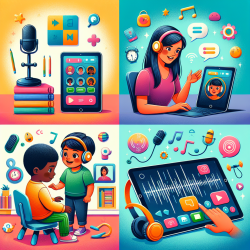In the realm of speech-language pathology, the integration of evidence-based practices is pivotal for achieving optimal outcomes, particularly for children. The Canadian Journal of Speech-Language Pathology and Audiology (CJSLPA) has been a valuable resource, offering peer-reviewed research that can significantly enhance clinical practice. This blog delves into the practical applications of findings from selected articles in CJSLPA, emphasizing how practitioners can improve their skills and encourage further research.
1. Language Learning in Bilingual Children with Down Syndrome
The article "Language Learning in Four Bilingual Children with Down Syndrome: A Detailed Analysis of Vocabulary and Morphosyntax" by Krista Feltmate and Elizabeth Kay-Raining Bird provides an in-depth examination of bilingual language development in children with Down syndrome. The study highlights that bilingual children with Down syndrome can develop functional language skills in both languages without consistent adverse effects of bilingualism. This finding is crucial for practitioners working with bilingual families, as it supports the inclusion of dual language exposure in therapeutic interventions.
Practical Application:
- Encourage bilingual families to continue using both languages at home.
- Incorporate bilingual language development goals in individualized education plans (IEPs).
- Use language sample analysis to monitor progress in both languages.
2. The Promise of Nonword Repetition as a Clinical Tool
Lisa M.D. Archibald's article "The Promise of Nonword Repetition as a Clinical Tool" underscores the utility of nonword repetition tasks in diagnosing Specific Language Impairment (SLI). The study found that nonword repetition tasks effectively discriminate between children with SLI and typically developing peers. This tool can be particularly useful in diverse clinical settings due to its simplicity and cultural fairness.
Practical Application:
- Implement nonword repetition tasks in initial assessments for children suspected of having SLI.
- Use nonword repetition performance to tailor intervention strategies focused on phonological memory and processing.
- Monitor progress through periodic nonword repetition assessments to adjust therapeutic approaches as needed.
3. Pediatric Cochlear Implantation in Canada: Survey Results
Elizabeth Fitzpatrick and Lynne Brewster's survey "Pediatric Cochlear Implantation in Canada: Results of a Survey" reveals significant trends and changes in cochlear implantation practices. Notably, the survey highlights the increasing number of children receiving implants at younger ages and the growing consideration of children with additional disabilities for implantation.
Practical Application:
- Advocate for early cochlear implantation in eligible children to maximize auditory and speech development.
- Develop comprehensive pre- and post-implantation support plans, including multidisciplinary collaboration.
- Stay informed about the latest cochlear implant technologies and surgical techniques to provide up-to-date recommendations to families.
Encouraging Further Research
Practitioners are encouraged to stay abreast of the latest research published in journals like CJSLPA. By critically appraising and implementing evidence-based findings, clinicians can enhance their practice and contribute to the broader knowledge base. Additionally, engaging in or supporting research initiatives within their practice settings can provide valuable insights and improve clinical outcomes.
To read the original research papers and explore more findings, please follow this link: Canadian Journal of Speech-Language Pathology and Audiology (CJSLPA) / Revue canadienne d'orthophonie et d'audiologie.










